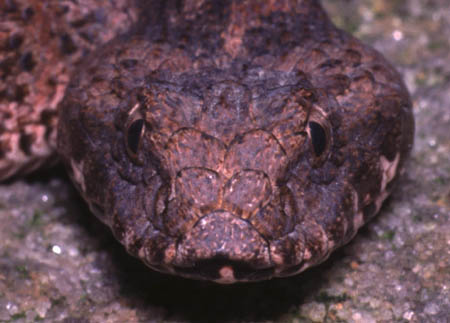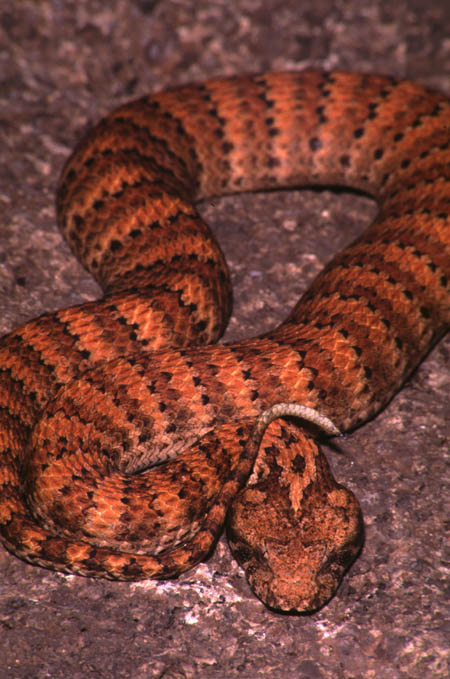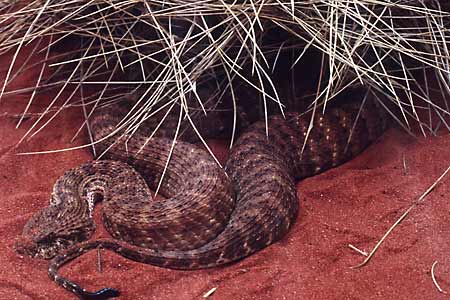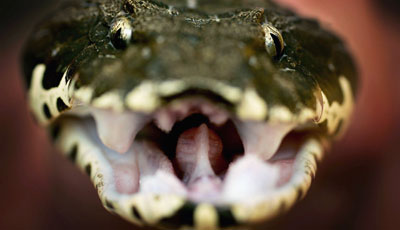Death adders inject on average 40–100 mg of extremely toxic venom (0.4–0.5 mg/kg murine LD50, subcutaneous, or in simpler terms, a 0.4-0.5 mg/kg dose would kill 50% of mice) with a bite. This makes an untreated death adder bite one of the most dangerous in the world.
Death adder venom is completely neurotoxic, containing neither haemotoxins or myotoxins, unlike most venomous snakes.
Any death adders venturing into domestic gardens, work sites and farms or in any undesirable locations would be valuable additions to our snake milking program and we would be grateful for any support from the local community. We do not urge anyone without snake handling experience, to try and catch these snakes. Just simply observe where they take refuge, mark they spot and call us using the contact details at the end.
Death Adder Snake

A bite from a death adder causes paralysis. While this paralysis is very minor at first, it can cause death from a complete respiratory shutdown in as little as six hours. Symptoms peak in 24–48 hours.
Symptoms of envenomation can be reversed through the use of death adder antivenom, or using anticholinesterases, which break the synaptic blockade by making acetylcholine more available to the parasympathetic nervous system, thus mitigating the effects of the venom.

Before antivenom was introduced, more than 50% of death adder bites were fatal. Now, with the antivenom, and due to the slow progression of envenomation symptoms, fatalities from death adder bites are very rare in Australia. In New Guinea, deaths from these snakes are still common.


![]()

The common death adder Acanthophis antarcticus or Death adders are the most distinguishable snakes in Australia. They have the habit of burying themselves in sand or leaf litter, with just their head and tail exposed whilst they lie in wait for potential prey. When a small bird, lizard or small mammal approaches, they twitch their tail rapidly like a grub to attract their prey. If the prey approaches close enough, the rapid strike rarely misses its mark. Source venomsupplies.com




Death Adder Snake or Acanthophis is a genus of highly venomous elapid snakes. They commonly called death adders, they are native to Australia, New Guinea and nearby islands, and are among the most venomous snakes in the world. The name of the genus derives from the Ancient Greek acanthos/ἄκανθος or "spine" and ophis/ὄφις "snake", referring to the spine on the death adder's tail.
They normally take 2–3 years to reach adult size. Females are generally slightly larger than the males. They can also be easily distinguished from other Australian snakes because of a small, worm like lure on the end of their tail, which is used to attract prey. Most have large bands around their bodies, though the color itself is variable, depending on their locality. Colors are usually black, grey or red and yellow, but also include brown and greenish-grey.